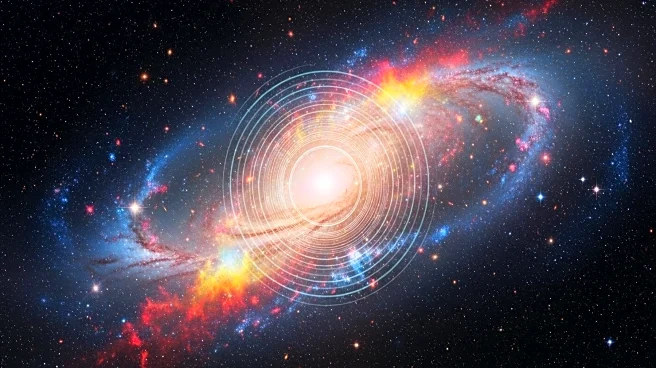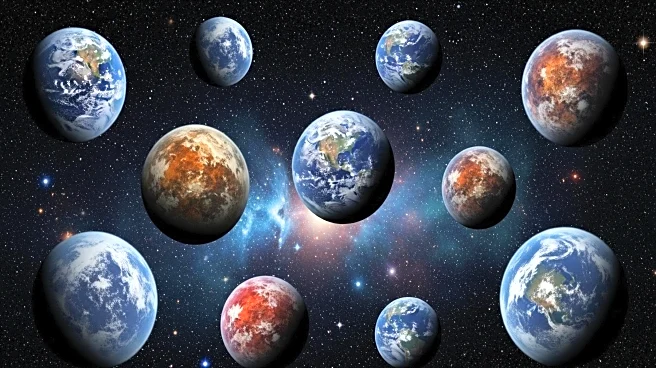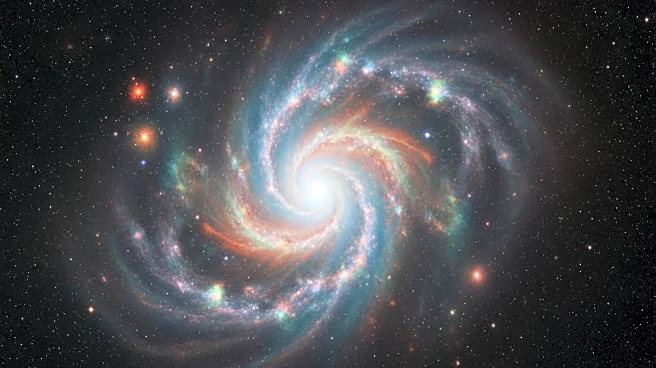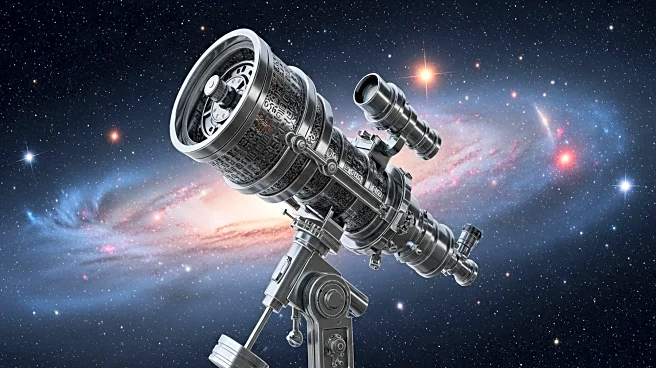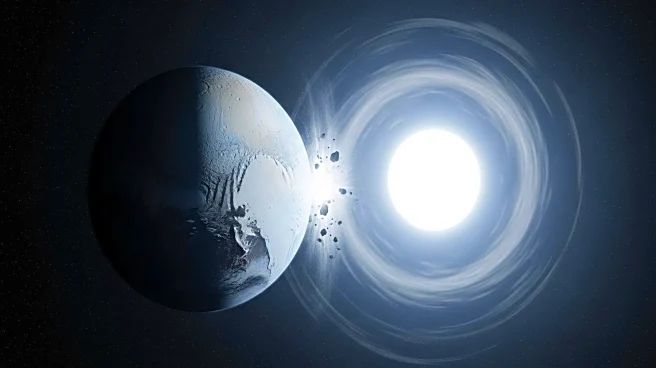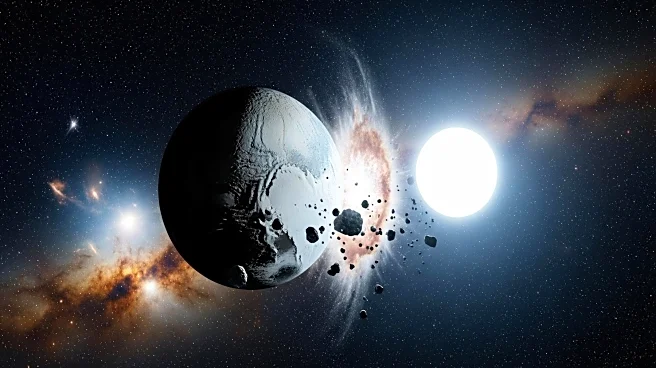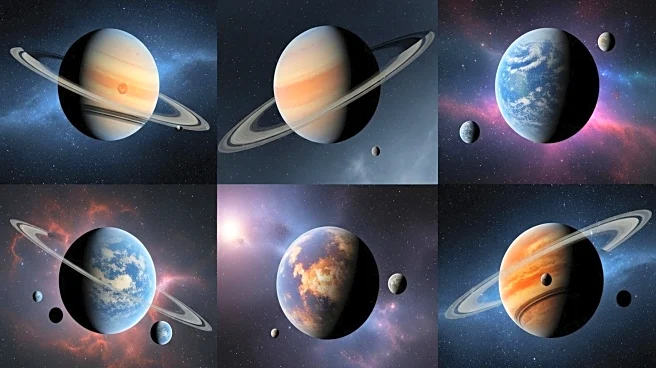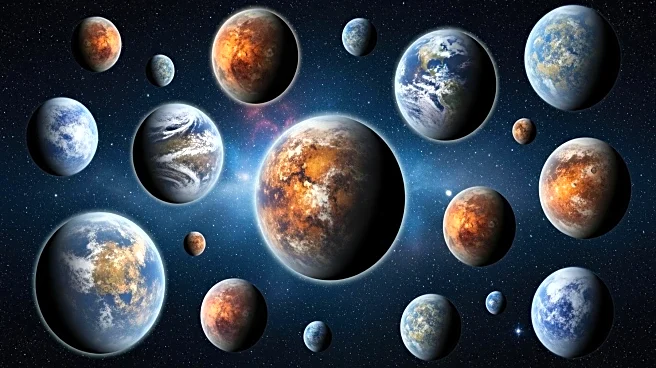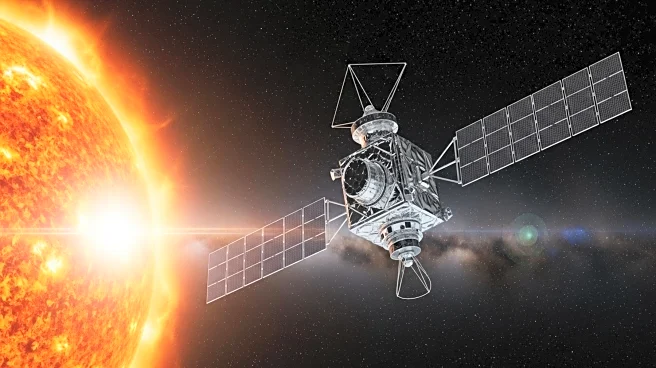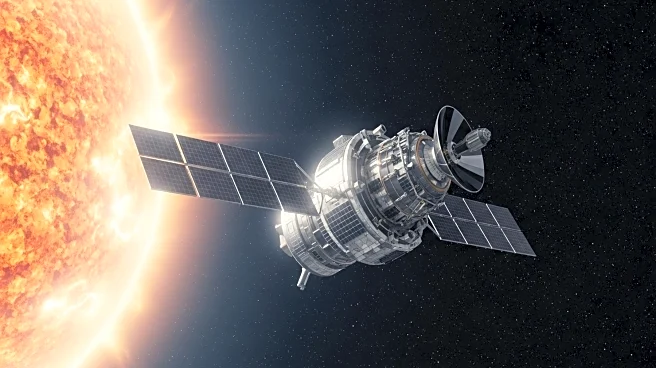What's Happening?
The Hubble Space Telescope has captured a white dwarf star consuming a fragment of a Pluto-like object, located approximately 260 light-years from Earth. This discovery, reported by NASA, reveals that the exo-Pluto is composed of 64% water ice, along with other volatiles such as carbon, sulfur, nitrogen, and oxygen. The white dwarf, once a sun-like star, has drawn in this icy planetesimal from its own Kuiper Belt-like region, showcasing the intense gravitational pull of such stellar remnants. The findings provide a glimpse into the potential future of our solar system, as our sun is expected to become a white dwarf and similarly attract icy bodies.
Why It's Important?
This observation is significant as it offers insights into the future evolution of our solar system. The presence of water and other volatiles in the exo-Pluto suggests that similar icy bodies in our solar system could be consumed by the sun when it becomes a white dwarf. This research enhances our understanding of stellar evolution and the fate of planetary systems. The study also underscores the capabilities of the Hubble Space Telescope in analyzing distant cosmic phenomena, contributing to our knowledge of the universe's dynamics.
What's Next?
The research team plans to utilize NASA's James Webb Space Telescope to further study the white dwarf and the exo-Pluto in infrared light. This will provide additional data on the composition and behavior of such celestial bodies, potentially revealing more about the processes occurring in dying star systems. The continued exploration of these phenomena could lead to new discoveries about the lifecycle of stars and their planetary systems.

